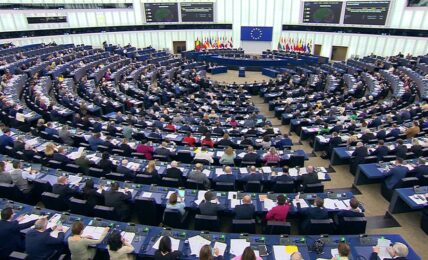JPMorgan Chase announced that it has achieved carbon neutrality across its operations in 2020, and unveiled a new set of targets towards its goal to align its financing activities with the climate goals of the Paris Agreement.
The announcements were made with the release of JPMorgan Chase’s 2020 ESG report, highlighting the company’s ESG progress, and setting a series of new sustainability goals for the financial services giant. The company outlined several of the steps taken to reach carbon neutrality, including improved energy efficiency initiatives throughout its branches and offices, such as LED lighting systems and energy-efficient building management system installations, the installation of on-site solar capacity across 900 branches, and entering into long-term renewable energy agreements.
On the financing front, JPMorgan Chase published its 2030 carbon intensity targets for several high-emitting sectors, including Oil & Gas, Electric Power and Auto Manufacturing. The targets form part of the company’s commitment, announced in October 2020, to align its financing activities with the goals of Paris Agreement, and to help clients navigate the challenges and capitalize on the long-term economic and environmental benefits of transitioning to a low-carbon world. Last month, the company announced a goal to facilitate $2.5 trillion of sustainable finance over the next ten years, earmarking $1 trillion for green initiatives that support climate action, with the goal of accelerating the deployment of solutions for cleaner sources of energy and facilitating the transition to a low-carbon economy.
Jamie Dimon, Chairman and CEO, JPMorgan Chase, said:
“There must be collective ambition and cooperation by business and government to tackle climate change. Setting our Paris-aligned targets is an important step toward accelerating the transition to a low-carbon economy and meeting the goals of the Paris Agreement. JPMorgan Chase is committed to doing its part by working with clients around the world to reduce emissions and by ensuring our own operations remain carbon neutral.”
By sector, the new 2030 targets include:
Auto Manufacturing. 41% reduction in the carbon intensity from manufacturing of new vehicles, and tailpipe emissions from such vehicles.Electric Power. 69% reduction in carbon intensity from electric power generation, which accounts for the vast majority of the sector’s climate impact.Oil & Gas. 35% reduction in operational carbon intensity, as well as a 15% reduction in end-use carbon intensity – reflecting a decrease in emissions from the combustion of oil & natural gas downstream and increase in renewable energy generation.
The company expects to add new sector-specific targets over time, with goals for the Aviation and Pulp & Paper sectors to be released by the end of 2022.
In order to guide its Paris-aligned financing initiatives, JPMorgan announced that it developed Carbon Compass, a methodology outlining its approach to target setting, client carbon intensity measurement, progress evaluation, and the integration of carbon performance considerations into business decision-making. Carbon Compass was developed with the support of sustainability consultancy ERM.
Keryn James, CEO of ERM, said:
“JPMorgan Chase is leading the way for the banking industry by developing and transparently sharing a practical methodology which tackles key challenges, such as the urgency of reducing methane emissions in the oil and gas sector, and the prominence of light duty trucks in the non-commercial U.S. fleet. They have embraced the enormous opportunity for the banking industry to finance the transition to a low-carbon economy and provided clarity to their corporate clients on credible decarbonization trajectories.”
Additionally, JPMorgan Chase unveiled a series of new sustainability goals for its own operations, including 2030 targets to cut greenhouse gas emissions from the operation of its buildings, branches and data centers by 40%, and to reduce global water consumption by 20%, plans to transition its fleet of owned vehicles to electric by 2025, to reduce office paper use by 90% by 2025, purchase 100% of paper from certified sources by the end of 2021, to divert 100% of e-waste from landfill, and to satisfy at least 70% of its renewable energy goal with on-site renewable energy and off-site long-term renewable energy contracts by 2025.
The post JPMorgan Achieves Carbon Neutrality in Operations, Sets Carbon Reduction Financing Targets for High Emitting Sectors appeared first on ESG Today.


